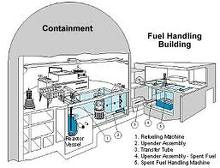Risks to Pilgrim's high-level radioactive waste storage pool from major blizzard go unreported
 While there has been some media coverage about the potential risks to the Pilgrim reactor near Boston from this past weekend's major blizzard, there has been little to no mention of the risks to Pilgrim's high-level radioactive waste storage pool.
While there has been some media coverage about the potential risks to the Pilgrim reactor near Boston from this past weekend's major blizzard, there has been little to no mention of the risks to Pilgrim's high-level radioactive waste storage pool.
For example, Reuters has reported that on Sunday, off-site electricity was fortunately restored to Pilgrim, after having been cut off on Friday night. The blizzard knocked out Pilgrim's three connections to the off-site electrical grid, but emergency diesel generators fortunately continued supplying the power needed to run safety and cooling systems on the reactor, the NRC has reported.
However, not mentioned by news media coverage, and little known, is the fact that NRC does not require emergency back up power on the high-level radioactive waste storage pools. Under NRC's lax regulations, pools can rely entirely, and exclusively, on the electrical grid for the running of cooling water circulation pumps. Thus, when the grid goes down, the pool begins to heat up. After enough hours or days without water circulation, the pool can begin to boil. If the evaporation goes on long enough, the pool water can boil away the water cover over the stored irradiated fuel. If the high-level radioactive waste is exposed to air, it can quickly catch fire. As pools are not required to be located within primary radiological containment structures, either (see graphic, above left), this means that catastrophic radioactivity releases into the environment could result from a pool fire, as Alvarez et al. warned in Jan. 2003, in the aftermath of the 9/11 attacks.
Pilgrim's pool contains all the high-level radioactive waste ever generated there. None has yet been moved to dry cask storage, a very rare exception in the U.S. nuclear power industry. After more than four decades of exclusively pool storage, however, Entergy has applied to NRC for permission to begin moving some fraction of the pool's inventory into dry casks.





 February 11, 2013
February 11, 2013